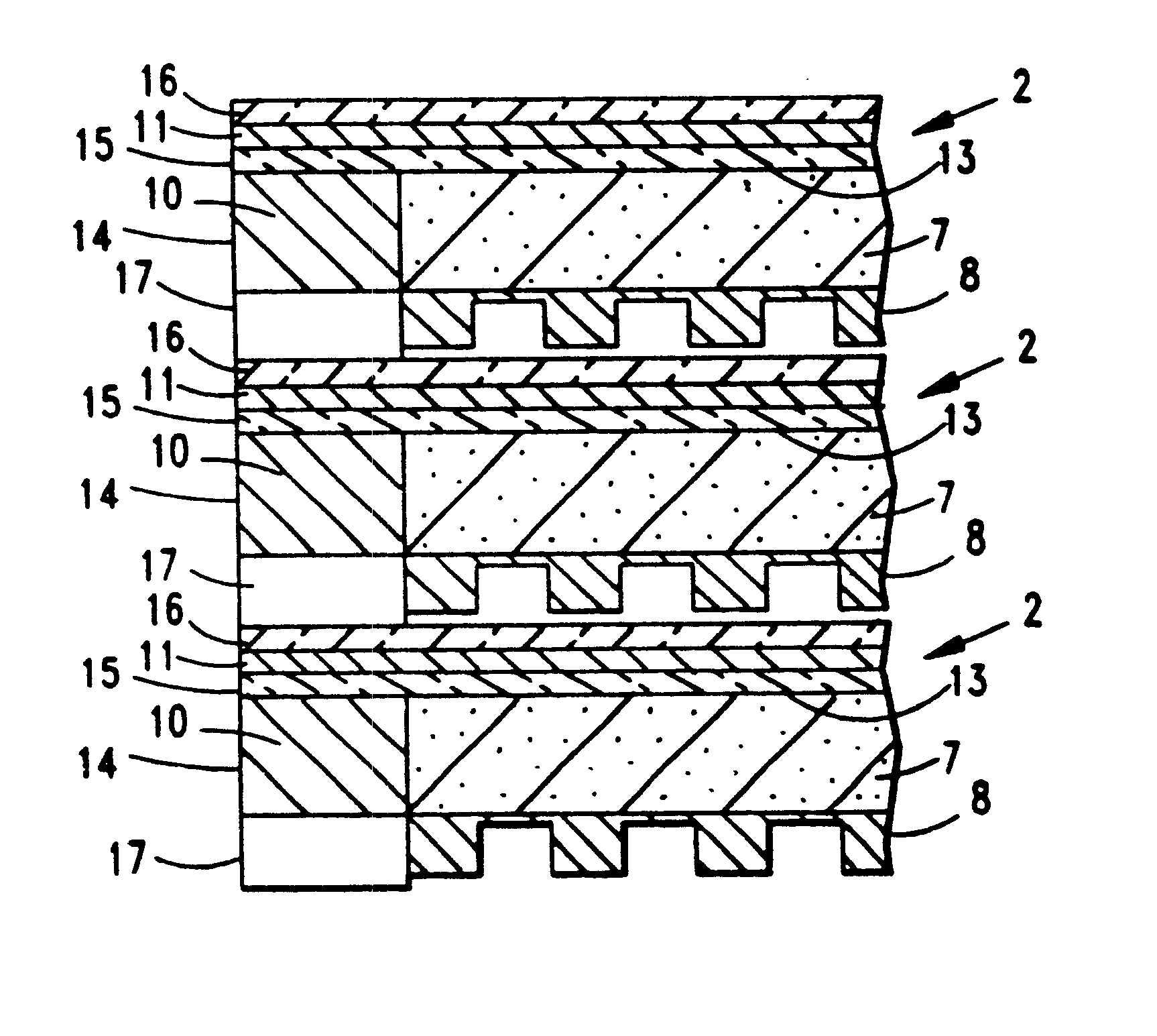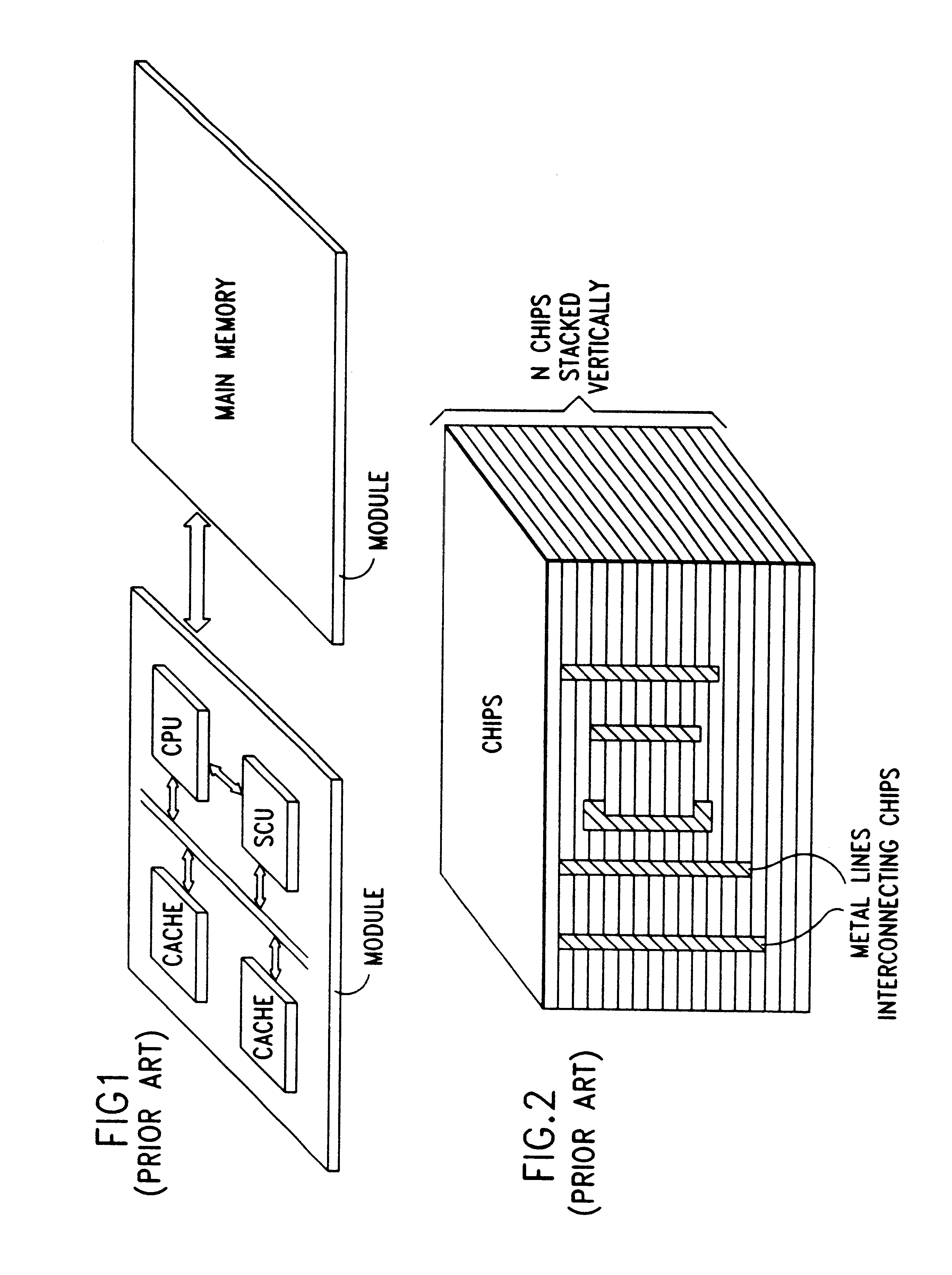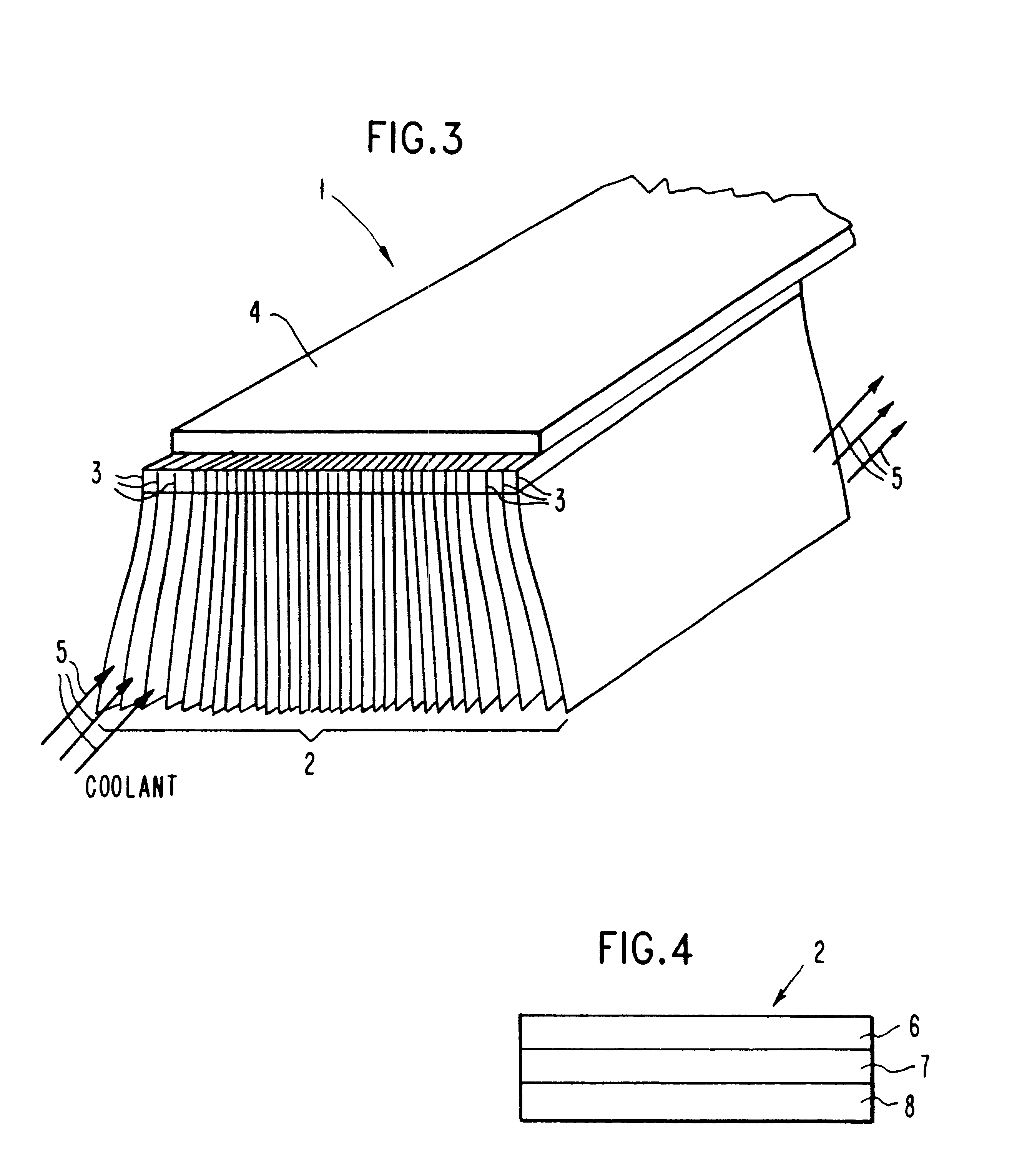Three-dimensional packaging technology for multi-layered integrated circuits
a technology of integrated circuits and packaging, applied in the field of three-dimensional packaging, can solve the problems of high manufacturing cost, complex interconnection schemes, and limit the number of ic chips which can be stacked vertically
- Summary
- Abstract
- Description
- Claims
- Application Information
AI Technical Summary
Benefits of technology
Problems solved by technology
Method used
Image
Examples
Embodiment Construction
Referring now to the figures in the accompanying drawings, the illustrative embodiments of the present invention will be described in detail, wherein like elements will be indicated in figures with like reference numerals.
In FIG. 3, a perspective view of a Massive Fillo-leaf Technology (MFT) module according to the present invention is schematically illustrated. As shown, the MFT module 1 comprises a plurality of elements, i.e. integrated circuit (IC) layers, hereinafter referred to as "fillo-leaf" circuit layers 2, which are bonded together at their edges 3 so that the fillo-leaf circuit layers 2 extend in a cantilevered fashion from bonded edges 3. Each fillo-leaf circuit layer 2 supports a plurality of pairs of electrically or light conductive lines (not shown in FIG. 3) which extend from a common plane of bonded edges 3 to one or more comparators or other means (not shown in FIG. 3) forming a portion of the Massive IC Chip Selection Architecture (MSA) of the present invention. A...
PUM
 Login to View More
Login to View More Abstract
Description
Claims
Application Information
 Login to View More
Login to View More - R&D
- Intellectual Property
- Life Sciences
- Materials
- Tech Scout
- Unparalleled Data Quality
- Higher Quality Content
- 60% Fewer Hallucinations
Browse by: Latest US Patents, China's latest patents, Technical Efficacy Thesaurus, Application Domain, Technology Topic, Popular Technical Reports.
© 2025 PatSnap. All rights reserved.Legal|Privacy policy|Modern Slavery Act Transparency Statement|Sitemap|About US| Contact US: help@patsnap.com



